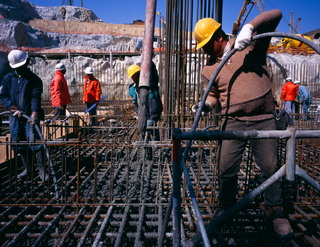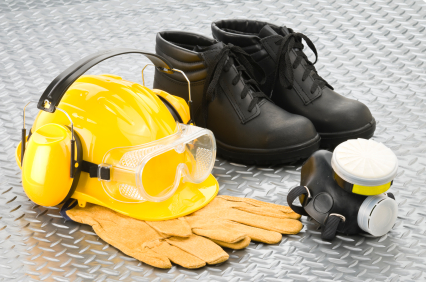Imagine you have a client that is a general contractor overseeing the construction of a 10 story office building. He has hired subcontractors to help him in this task. During the process of hoisting in a piece of heavy equipment, one of the subcontractors removes part of a barricade that surrounds the otherwise exposed outer ledge. Later that day, a worker in the area under the direction of another subcontractor slips and falls off the now unprotected ledge. How easy is it to determine who is responsible for preventing these incidents and who failed in their safety duties?
Although this is an incredibly simplistic scenario, one can easily imagine how quickly the web can get tangled as roles overlap at a high traffic, multi-story, multi-complex work site occupied by numerous contractors and subcontractors.
When trying to understand the safety roles and responsibilities of each entity at a construction site, the Occupational Safety and Health Administration’s (OSHA) Multi-Employer Directive is a good place to start. It is the framework developed and used by OSHA to allocate responsibility and delegate fines in relation to safety violations. The Directive identifies the primary types of employers present on a construction site, determines the scope of safety duties for each entity, and defines the reasonable care they are responsible to provide in an effort to ensure the safety of their employees. The Directive places employers into four categories: Creating, Exposing, Controlling and Correcting.
If a contractor covers a hole in the floor with black plastic, but fails to barricade it or mark it as a hole; he would be an example of a creating employer (he’s created a hazardous situation by covering a potentially noticeable danger). A contractor who orders his employee into the area where the covered hole is located would be defined as an exposing employer (he has exposed his employee to the hazard by ordering him into the area). A contractor with supervisory authority to routinely inspect the site might find the hole and recognize the danger. His responsibility to either guard it or require another contractor to correct the situation would classify him as the controlling employer (he’s controlling the safety of the work-site). Finally, the contractor in charge of installing the barricades and warning signs around the hole would be the correcting employer. Seems simple enough, right? Not so fast.
One contractor can wear more than one hat of responsibility. In addition to the project contract which spells out what classification of employer a contractor is to be, the activities and behavior of that contractor at the work site can affect their classification as well. For example, a General Contractor (GC) notices one of the subcontractor's employees engaging in unsafe behavior and directly corrects him (as opposed to going through his foreman/supervisor). This action may establish the GC and his company as the subcontracting employee’s safety supervisor–and if he is injured or killed, the GC may become entangled in the safety duties and responsibilities of that incident. That simple moment of direct communication can have a legal implication as to the defined role of the employer.
Another example of practical versus contractual definitions is when a smaller general contractor hires a larger, specialty subcontractor, which comes complete with a professional safety staff, inspectors, and an established safety protocol of how they execute their work tasks. The general contractor's lack of a safety protocol compared to the sophisticated level of the specialty subcontractor's safety protocol may define the subcontractor as the Controlling Employer.
It is important to understand that multi-employer liabilities arise not only in regulatory issues, but also in civil arenas. Any contractor meeting the definition of a Creating, Exposing, Correcting, or Controlling Employer may be subject to a lawsuit for damages sustained by an injured worker.
Since OSHA is the noted source for worksite safety, it also establishes the framework for civil and other litigation. It is upon this foundation that arguments may be laid to ensnare additional contractors and defendants, who are not covered by workman compensation limitations, in construction site accident litigation.
OSHA’s Multi-Employer Directive defines and clarifies roles and responsibilities found at a work site. However, in actual practice these roles and responsibilities can get muddled very quickly. The construction experts at CED Technologies can leverage their knowledge and experience to sort through the sequence of events, contract duties, and actual contractor responsibilities that were in place at the time of an accident.
CED has been providing such a service for over 24 years and is regarded as one of the leaders in the industry. For more information on CED please check out our web site at www.cedtechnologies.com – call us at (800) 780-4221 – or via E-mail at casemanager@cedtechnologies.com.






